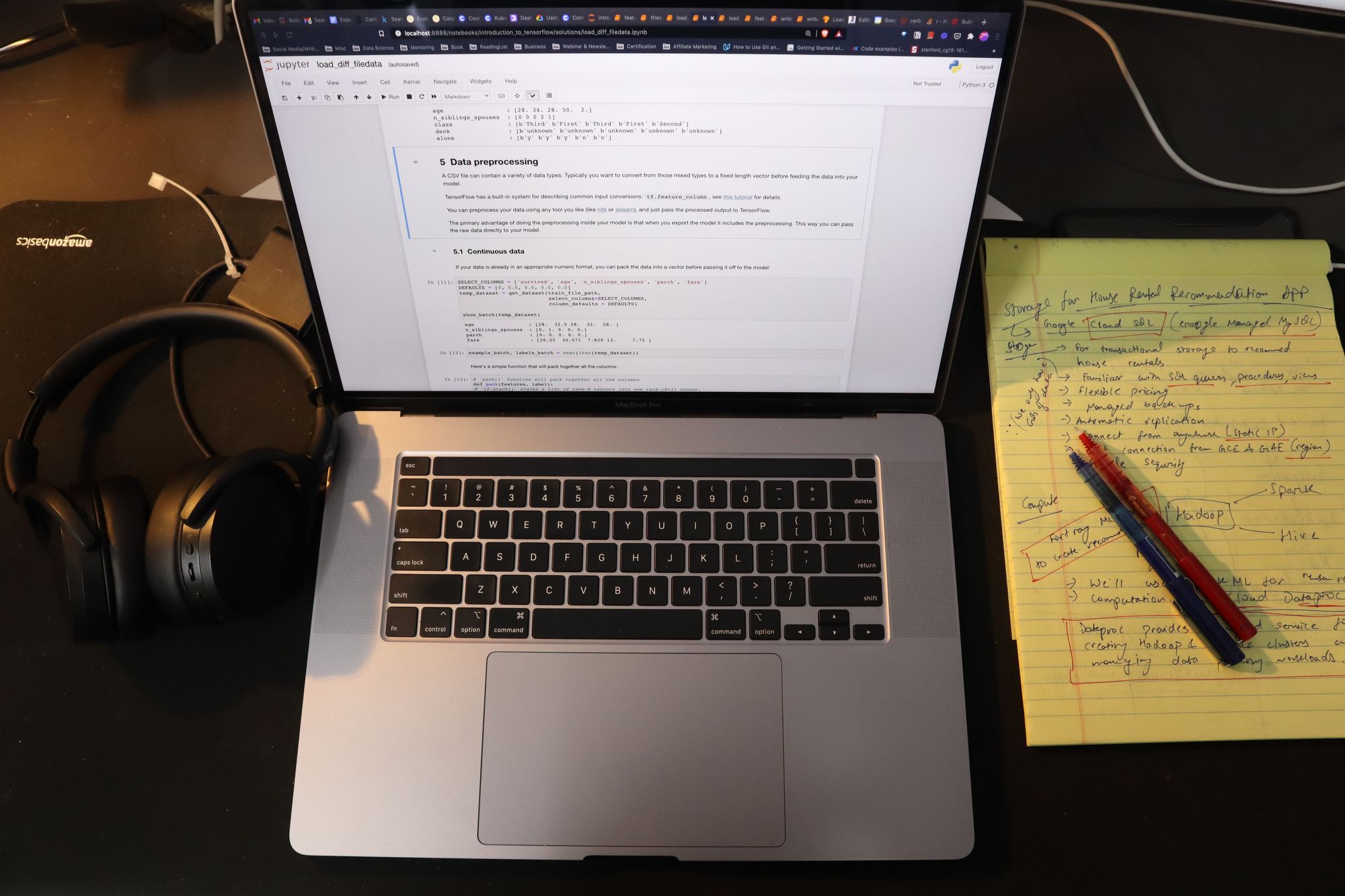“Good friends, good books, and a sleepy conscience: this is the ideal life.”
― Mark Twain
I hope you’re reading this blog in your pjs looking forward to a rejuvenating and healthy weekend.
I have been working on multiple projects lately, from creating Machine Learing Engineering and Machine Learning Operations courses to developing end-to-end ML systems at scale. And I have realized that often times I am either revisiting a book that I’ve read or I’m referring to a book that I just skimmed through but never got the chance to really read.
This week, I want to share with you the books that I personally feel every ML enthusiast and practitioner should read to get a sense of the breadth of ideas and depth of this field.
It is a short and crisp list covering a majority of ML topics. It should be useful both for beginners getting started and intermediate-level professionals wanting to understand the intricacies of engineering successful ML systems.
So, here we go...
#1 — Hands-On Machine Learning with Scikit-Learn, Keras and TensorFlow, 2nd Edition
By Aurélien Géron
This book is simply a work of art. I highly recommend not just reading this book but also coding along with the author.
The book is divided into two parts — the first part is focused on the fundamentals of machine learning and covers all the major classic ML algorithms. It has just the right amount of mathematical explanation and Python code to actually start developing models.
The the second part focuses on neural networks and deep learning.
I have read through this complete book and have maybe read a few chapters two or three times in order to get the concepts right and do the exercises.
Reading tip for this one: Spend 2–3 days (or more if needed) with each chapter if you’re spending 2–3 hours learning actively.
#2 — Machine Learning Engineering
By Andriy Burkov
Andriy has done it again. This book explains each phase of the ML Systems Lifecycle and is a complete and concise resource for anyone who intends to build scalable ML-powered applications.
The book is a compilation of engineering challenges and best practices to make ML work in production. Andriy explains how you should look to plan a project, why projects might fail, and how to approach every step . Here are the sections in this book:
- Before the Project Starts
- Data Collection and Preparation
- Feature Engineering
- Supervised Model Training
- Model Evaluation
- Model Deployment
- Model Serving, Monitoring, and Maintenance.
His first book, The Hundred-Page Machine Learning Book, was a great success and the same can be said about this one as well.
#3 — Practical Deep Learning for Cloud, Mobile, and Edge
By Anirudh Koul, Siddha Ganju, and Meher Kasam
The book follows the practical advice that you should learn by doing. It's a hands-on guide to building Deep Learning applications for the cloud, mobile browsers, and edge devices. I am currently reading this book and I am surprised that I didn’t stumble upon it before.
Every chapter helps you build an application end-to-end. Each application targets a subdomain of deep learning, a different serving method, or techniques to optimize experimentation using TensorFlow.
It's a must-read for people already familiar with deep learning. This book helps you dive deeper and learn by building a set of cool projects.
#4 — Building Machine Learning Pipelines
By Hannes Hapke and Catherine Nelson
After reading a number of case studies on how organizations like Spotify and Airbnb are using TF Extended to improve their ML platforms, I started learning about TFX. It can really help you optimize the development of end-to-end pipelines.
The book explains techniques to set up ML pipelines right through from data ingestion to pipeline orchestration using Airflow or Kubeflow. TFX along with TF offers tools for every step of the process.
This is an advanced-level read, and you should indulge only after you are done reading the top two recommendations.
Interesting Read of the Week
This is a slightly unusual recommendation compared to what I usually write about. But I couldn’t resist sharing it with you because of the sheer quality of the work here.
Do you understand how an internal combustion engine works? How all of these parts come together to power your vehicles and machines? Well, I have come across the best possible explanation of the functionality of all the basic engine parts.
Read the article: Internal Combustion Engine by Bartosz Ciechanowski
The beautifully designed, 360 degree, in-action illustrations along with the explanation not only help you understand combustion engines, but for my part it definitely inspired me to work harder on my art.
This made me question whether our education system is doing enough to inspire us or are they just getting away with “teaching” us.
Thanks for reading!
That’s it for this week. I don’t want to bog you down with a plethora of random ML books. Feel free to reach out if you have any thoughts, recommendations, or questions.
If this tutorial was helpful, you should check out my data science and machine learning courses on Wiplane Academy. They are comprehensive yet compact and helps you build a solid foundation of work to showcase.
